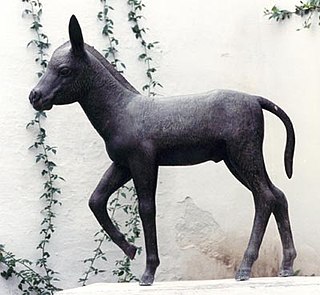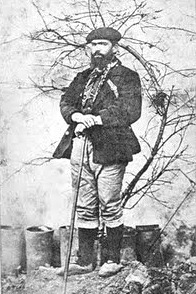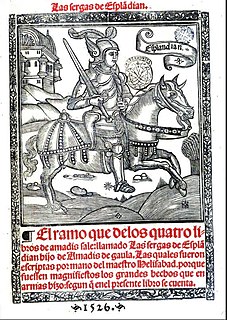 W
WAmadís de Gaula ; Portuguese: Amadis de Gaula, [ɐmɐdjʒ dɨ gawlɐ]) is a landmark work among the chivalric romances which were in vogue in sixteenth-century Iberian Peninsula, although its first version, much revised before printing, was written at the onset of the 14th century.
 W
WCalafia, or Califia, is the fictional queen of the island of California, first introduced by sixteenth-century poet Garci Rodríguez de Montalvo in his epic, Las sergas de Esplandián, written around 1510. The Californias, a region of North America encompassing the U.S. state of California and the Mexican states of Baja California and Baja California Sur, take their name from Calafia and her kingdom.
 W
WPepe Carvalho is a fictional private detective, the protagonist of a series of novels written by Manuel Vázquez Montalbán.
 W
WFrancisco Estévanez Rodríguez was a Spanish politician, publisher, philanthropist, agrarian syndicalist and religious activist. He is best known as deputy to the Cortes during two terms between 1931 and 1936. Politically he was a Traditionalist, first member of the Integrist branch and then active within Carlism. He also published two small Burgos periodicals, continuously donated money and supported various charity schemes, strove to build rural trade unions which unite landholders and farmers, and was involved in numerous Catholic initiatives usually related to the Burgos archbishopric office.
 W
WPlatero is the eponymous donkey of the 1914 story Platero and I. The book is one of the most popular works by Spanish poet Juan Ramón Jiménez, the recipient of the 1956 Nobel Prize in Literature. In 1960, the Italian composer Mario Castelnuovo-Tedesco composed a suite of music for guitar with narrator based on the book.
 W
WManuel Ignacio Santa Cruz Loidi (1842–1926) was a Spanish Roman Catholic priest. For some 35 years he served on apostolic mission in Colombia, where he was heading a parish in rural interior of the Pasto province; for some 15 years he held also various minor posts in Jamaica. He is best known, however, for his activity in 1872-1873, when he commanded a Carlist guerilla unit during the civil war in Spain. As "cura Santa Cruz" or simply as "El Cura" he gained notoriety for cruelty and in the Spanish public discourse of the late 19th century he became a symbol of savage brutality. In this role – though also with a grade of ambiguity - he featured as a protagonist in a few great works of Spanish Modernist literature of the early 20th century and became a mythical figure long before his own death.
 W
WLas Sergas de Esplandián is a novel written by Garci Rodríguez de Montalvo in the late fifteenth or early sixteenth century. The novel is a sequel to a popular fifteenth century set of chivalric romance novels, Amadís de Gaula. While the novel itself has met with some criticism for its lack of literary style, it achieved particular notability in 1862 when Edward Everett Hale concluded that the novel was the origin of the name California.